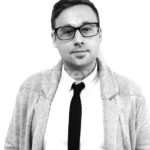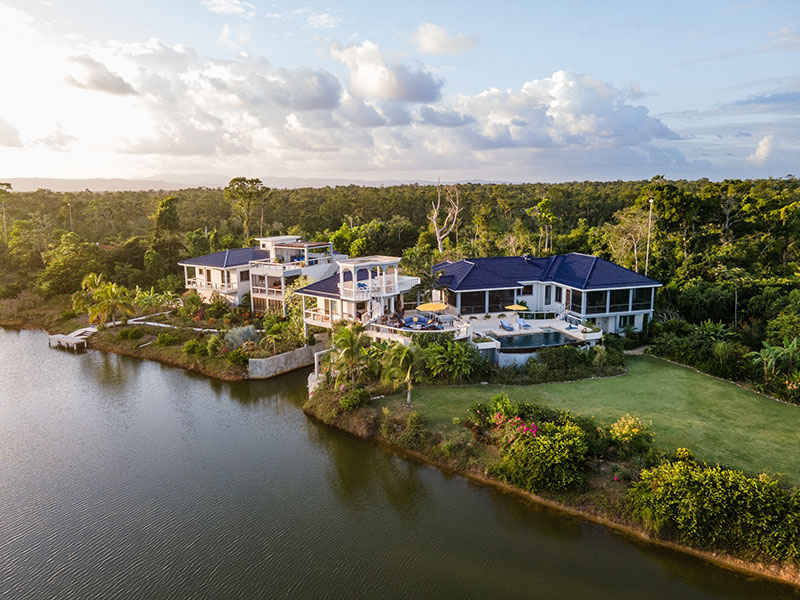Experienced financial investor Adam Gold launched Katam Hill in 2020. Katam Hill’s “differentiated strategy focuses on global growth investing that utilizes leverage and short-selling to capitalize on long-term and short-term secular, cyclical, and structural changes that create mispriced opportunities.” It is a strategy honed by Gold after decades of investing and put forth to give clients more from their investments.
Gold’s background as an investigative research analyst, portfolio manager, founder, and financial advisor exemplifies how much breadth of experience he has in the industry.
Gold’s latest endeavor, Katam Hill, is a compelling opportunity for both investors and founder. The company’s management of clients’ wealth is unique and ready to expand further.
Adam: Katam Hill launched in 2020 as an investment advisor managing wealth for clients. What led you to the company and what was behind its launch this year?
Katam Hill LLC (Katam Hill) launched at the dawn of a new decade to capitalize on the vast innovations and disruptions I foresee on the horizon. As an investor full of optimism and hope, a guiding force behind my investment tenets is to invest in a brighter future. I envision what the world might look like many years out, and investigate what those premises mean for various industries, sectors, and companies. The key is to find the best investments to capture those changes – on both the long and short sides – to benefit our clients and collective capital base.
This new chapter in my professional career also follows an exciting life event. Newly married as of last fall 2019, I am embarking on this journey together with the support of Katherine, my wife, and our families. They are all fully supportive of the launch – becoming some of our earliest clients – and Katam Hill was born.

Can you tell us about the firm’s differentiated strategy and its focus?
Katam Hill focuses solely on publicly traded companies with an eye on global opportunities. I employ a long/short equity strategy that seeks out beneficial tailwinds that can help sustain revenue and profit growth on our longs, while looking to capitalize on the opposite headwinds to profit on our shorts. The firm is not pigeonholed to any one geography, market capitalization range, or a particular sector like some managers and exchange traded funds (ETFs). This allows me to focus on technology innovation and its powers to create new and expanding markets across industries that can grow larger than anyone can imagine today.
My enthusiasm for profitable growth leads to investing in very select companies. I look for vertically integrated hardware, software, and service companies that can build widening and deepening moats. I favor platforms that enable developers to do their best work, leveraging a shared infrastructure of common tools. These full-stack architectures are unique to a few visionary companies that have the capabilities to innovate at all levels of their business. The more vertical integration, the more powerful and differentiated each element can become to strengthen the company as a whole. It is the powerful intersection of these three elements – compelling hardware, software, and services – that make businesses more profitable and defensible against competition in the years ahead.
However, not all growth is created equal. So, analyzing financial statements down to the per unit economics on products and services – for both new and existing customers – is essential. My educational background is in the fields of Finance, Accounting, and Investigative Journalism. I graduated Magna Cum Laude from New York University’s Stern School of Business. It is the combination of these interdisciplinary approaches that drive my quantitative and qualitative research processes to this day.
When analyzing data to spot trends ahead of others, you need to think about changes that might occur over various time horizons. There are three big categories: 1.) Structural tectonic shifts are so powerful that they can be felt both in the short and long-terms 2.) Cyclical economic cycles are more short-term in nature depending on the broader macro environment, and 3.) Secular changes are longer-term in nature. Katam Hill’s flexibility and unique capability is in identifying when the confluence of these three trends occur, driving powerful shifts in business and consumer behaviors. These changes subsequently cause other Wall Street analysts to alter their price targets, earnings models, and valuation frameworks. Katam Hill seeks to be ahead of these moves and be proactive, not reactive. Since the pandemic shocks hit earlier this year, a digital transformation has been occurring, producing a rapid acceleration of these three categories of change.
Lastly, and perhaps most importantly, is to invest in companies that have excellent management teams. A visionary leader who exhibits persistence and persuasiveness, and has a humble demeanor focused on the long-term, will be the best steward of our precious capital. Responding to crises is a burden of leadership, and those that demonstrate integrity with an armor to make tough decisions – despite opposition – can greatly contribute to our investment successes over time. I want to align with those founders and executives who share my vision for a brighter future.
Gold has devised a way to try and ensure his clients make wise investments in companies around the globe. Katam Hill’s differentiated strategy was designed to benefit clients and make the most out of each investment.
How does Katam Hill’s differentiated strategy benefit clients and enable them to make wise wealth investments?
Katam Hill is only interested in the greatest investment opportunities of our lifetime: the very best of the best. I put a lot of energy into sorting through the swaths of companies available to trade, to drill down into names that can compound for decades. Then, it is patience and conviction that create a concentrated portfolio of companies riding tailwinds for many years to come.
A best-ideas, concentrated approach to portfolio construction does not hold passive ETFs or rely on mutual funds run by others. These other managers may own 100 to 200 positions in each fund. Oftentimes, I review potential client portfolios at their request and cannot believe how many own 1% to 2% holdings in 50 different ETFs & mutual funds (with dozens of overlapping positions), and with duplicative layers of fees. Conviction can lead to superior results over time. Why have prized capital allocated to your 500th or 1,000th smallest position versus having more money in your biggest winners? Or utilize widespread passive allocations that expose large portions of investors’ portfolios to declining businesses and underperforming sectors for extended periods of time. Rather, Katam Hill believes in a different approach: to hold 10 to 20 core long-term holdings and add to them over time, particularly when others are panicking and selling.
Logistically, Katam Hill is a registered investment advisor (RIA) in the State of California. Each client has their own account established at custodian Interactive Brokers (IBKR), a publicly traded financial services firm with almost one million accounts and over $200 billion of customer equity (as of June 30, 2020). IBKR has a robust technology platform with a catered solution for investment advisors like us. Together, we handle account applications, onboarding, and funding (including any complicated paperwork from rollovers and transfers). Our clients deserve full transparency. So, we offer insights with real-time portfolio holdings and profit & loss (P&L) details, accessible via around the clock access using IBKR’s web portal and mobile applications (iPhone, iPad, and/or Android devices).
Katam Hill offers clients two categories of separately managed accounts (SMAs): margin accounts and retirement accounts.* For margin accounts, investments can be made in securities around the globe in foreign currencies, and can utilize a short-selling strategy where expectations are to profit from declining share prices. For longs, the goal is to buy low and sell high. For shorts, it is the opposite, where you hope to sell high and buy low to capture profits. For retirement accounts (IRAs, Roths, SEPs, etc.), many of the same long positions that are in our margin accounts are held, but only the U.S. listed companies. Retirement accounts cannot utilize leverage or borrow foreign currencies to trade in overseas securities.
*For both types of accounts, I make no guarantee or prediction of results based upon expectations, or any reference to my current, past, and future performance.
Gold has worked from some of the world’s most prestigious investment firms. The knowledge he has gained from those firms helped him create Katam Hill to deliver the best investor knowledge to clients.
Before starting Katam Hill, you worked at many prestigious investment management firms. How have these experiences helped in your current role as Founder & CIO of Katam Hill?
Actually, my earliest investing memories date back to 1995. It was the dawn of the consumer Internet revolution. I was in awe when I bought my first book on Amazon.com using AOL’s blazing dial-up service with connection speeds in the low kilobytes. I thought it was magic that it took only two hours to download a song on our Dell laptop connected to my first-ever home WiFi network using a Linksys/Cisco wireless router. It turns out, those companies were amongst four of the best stocks of the 1990s, and they awakened my fascination with technology innovation and the correlation to subsequent share performances. Today, we live in an always-on, gigabyte world with mobile 5G and exabyte speeds on the horizon. The great part of technology is it never stops improving, bringing more people newer experiences at faster performances. But you must closely monitor that technology does not leapfrog your existing business, unless you are the one doing the cannibalization, thus ensuring your future. Apple is well-known for its success in cannibalizing itself when its iPhone incorporated iPod functionality, which worked out quite well for both the company and its stock.
My professional investment career started at age 18 in New York City when I secured an internship at EnTrust Capital, a hedge fund launched just four years earlier by three Goldman Sachs partners. I rode the A/C/E subways from NYU’s campus to midtown Manhattan and felt enthralled by the possibilities. Over my six years with EnTrust, I rose quickly from unpaid intern to full time analyst covering the technology, media, telecom (TMT) sectors. Due to constant desk reshuffling to accommodate a growing team, I recall enjoying a corner office overlooking Central Park for some time. It certainly felt great to have a corner office and such responsibility at that age. I very much admired the founders’ entrepreneurial spirit, and their influence remains with me to this day.
At age 25, I became a portfolio manager at Gilder Gagnon Howe (GGHC) in New York, which gave me experience in client relations and global growth portfolio construction. After three years of strong returns, I caught the attention of institutional investors and was encouraged to launch Espial Capital – a global long/short equity hedge fund. Espial was an incredible growth experience, allowing me to run my first company, manage a team, handle an investment committee, and supervise all operations. During that time, however, IPOs (initial public offerings) dried up, leaving many of the most innovative companies staying private for much longer than expected. This led me to move west.
In 2014, I moved to Sand Hill Road in Silicon Valley, California to put myself in the heart of technology innovation. Working on private rounds completed the investment life cycle for me. The spectrum ranging from early-stage, pre-product startups and companies scaling up in the growth-stage to global public equity securities, all the way to short selling to capitalize on potential bankruptcies at the end of the road.
I planted my flag in Los Angeles when I joined Merrill Lynch in 2018. There, I renewed my securities licenses, and passed the SIE, Series 7, and Series 66 exams. My time at Merrill was a great onboarding experience to the advisory business of a global brand. However, its breadth of product offerings is so vast, that I realized early on I wanted to move to an independent path; one where clients’ interests come first, and I can run a dedicated strategy that I believe will produce superior results over time.
These collective experiences have influenced my focus at Katam Hill. Today, I truly believe that public equity markets offer the best opportunity ahead for investors, given the acceleration of tectonic changes underway across business and consumer behaviors. The global pandemic has proven to be an acceleration of existing trends, shifting the adoption and penetration curves forward by many years in a matter of months. And I do not believe our course will revert back, reversing these rapid changes.
In 2020, why should individuals seek out a firm to invest their wealth? How can Katam Hill improve a person’s finances?
One question that nearly all investors from individuals to large institutions (like pension funds) need to decide upon is how to best divide their asset allocation between two very large buckets: A) Equities versus B) Fixed Income. There is no right answer; the split depends on your financial situation, age, and unique aspirations and goals.
The reason this allocation is so influential to markets is the size of each asset class is massive. The value of equities in global stock markets is around $100 trillion. The total size of the global fixed income bond market is also around $100 trillion. These estimated figures are roughly inline with a historically recommended, conservative 50/50 stock versus bond allocation (with variations of that mix depending on those personal variables I just mentioned).
Unfortunately, for many parts of the world economy, we might be in an extended period of slow economic recovery similar to what followed the Great Recession of 2007-2009 – where interest rates remained lower longer than people expected. Once again, global rates have been cut to historically low levels to encourage investments by corporations, and keep debt payments low for consumers to allow for more affordable interest payments on automobiles, homes, and other lendings. The comparative return profiles of fixed income versus equities impact the allocation mix. On some basis, this helps to explain the stock market’s recent strength since interest rates have been cut so low around the globe, investors are seeking higher returns. Since interest on fixed income (cash, bonds, municipal, deposits) is earning next to 0%, many people and institutional funds are rethinking their allocations towards equities to meet future obligations. Such low interest rates do not keep up with annual inflation that has varied around +1 to 2% per year over the past decade. Savings rates are 1/10th that amount, implying negative savings rates when incorporating inflation.
Katam Hill only invests in equities, some of which pay dividends that equate to ‘fixed income’ payouts larger than any bond or savings rate available elsewhere. I believe growth in equities, and particularly profitable dividend paying companies, where you can automatically reinvest dividend distributions back into more shares, can lead to better returns. To be clear, the firm cannot predict the timing or offer any specific guidance on what future fixed income rates might do. However, I do believe that we can perform well in both a low rate and high rate environment by focusing on global growth opportunities.
Gold is very interested in philanthropic work. In 2012, he founded the Espial Foundation and since then, the group has focused on the power of technology and innovation.

Adam, your philanthropic endeavor, the Espial Foundation, was founded in 2012. Can you tell us about the Espial Foundation and what inspired you to begin the organization?
Similar to Katam Hill’s investment focus on the power of technology, innovation can improve society for all citizens. The Espial Foundation’s core tenet remained steadfast: investments in TECH (Technology|Education|Children|Health) have the power to change the world for the better. My former team pursued themes with targeted outcomes, such as partnering with organizations that taught girls to code, in hopes of encouraging more future female engineers to start companies. It also supported organizations that tried to tackle large global challenges like climate change and ending extreme poverty.
The Espial Foundation was inspired by a former manager I had back in New York City, and operated from the inception of my previous firm – Espial Capital. Richard Gilder was the founder of GGHC, an investment management firm I worked at in Midtown Manhattan with offices near Central Park. He had contributed to Central Park’s Conservatory for several decades, as well as the New York Historical Society and the Museum of Natural History on the Upper West Side. In 2010, a year and a half after I started managing client money at his namesake firm, I joined my colleagues for an honorary celebration naming West 77th Street and Central Park West the “Richard Gilder Way.” It was a unique honor in a city I loved living in for almost ten years. There are many well-known money managers in New York, but very few (if any) had a street named after them. Sadly, he suffered a stroke several years prior to that naming ceremony. And by the time he was gifted that street, his health had deteriorated quite negatively. It hit me then that I should do as much good as I can as early as I can. Why wait until you are older to donate; start giving back now, and never stop giving back.
Why is it important for you as an entrepreneur to give back through philanthropic endeavors?
“Do all the good you can, for all the people you can, in all the ways you can, for as long as you can.” This 18th Century quote is a powerful call to action that doesn’t differentiate between monetary donations and volunteering your time or energy. “All that you can” may mean different things to different people. Thinking beyond yourself to try and help others ties into Katam’s client-first approach to investing. I believe deeply in the power of compounding, which can impact far more than just our client base. If our firm can help create generational wealth that impacts client lives – not only today, but well into the future – that might free the time for the pursuit of their own passions, charities, and volunteerism. And depending on resources, their collective giving might be far more impactful than any monetary amount gifted.
Operationally, there is a concrete model I can point all entrepreneurs to follow. At his company’s annual user conference, Dreamforce, Marc Benioff, co-founder of Salesforce.com, told me that his Salesforce.org’s 1/1/1 model was the best business decision he ever made in his career. I employed that same model at Espial. I still encourage every founder I meet to adopt a solid giving plan that incorporates 1% of your company’s time, 1% of your profits, and 1% of your resources to help the world. Since its founding, Salesforce.org has given more than $240 million in grants, 3.5 million hours of community service, and provided product donations for more than 39,000 nonprofits and education institutions. I remain a proud supporter of the 1/1/1 Model.
How difficult has being an entrepreneur been for such a young company since the coronavirus pandemic engulfed the world?
Halting all physical interactions with the outside world has presented new challenges for all of us. There is something telling about looking a person in the eyes and exchanging a solid handshake to commence or end a meeting. That just might be an archaic gesture on the other end of this pandemic. As all good entrepreneurs must do, you either adapt to thrive or you suffer. Luckily, with foresight, our onboarding and client service processes were already cloud native from inception. I did not have to scramble to digitize interactions with potential clients or to service existing accounts. We were future built from the start.
An element of the research process I miss is hands-on, in-person due diligence. Visiting companies on their own turf to interview CEOs and CFOs, touring headquarters, and seeing and ‘feeling’ a company’s culture is not quite the same over video. The same goes for industry-specific technical conferences, conventions, and tradeshows to meet industry peers. I do a tremendous amount of reading, digging into company filings, books, and scientific whitepapers on new technical architectures. I engage in dozens of video interviews and listen to podcasts while out on walks with my Maltese puppy, Alfie. And I am hopeful for the days when I can participate again in global physical events, and be amongst new people to meet, share, and gain fresh perspectives once more.
According to Gold, the COVID-19 pandemic has had “broad and deep” impacts on the financial sector. It will be some time before the world fully sees the effects of the pandemic as things continue to play out.
What has the pandemic’s impact been like on the financial sector and do you see a light at the end of the tunnel?
The impact to the financial sector is broad and deep. And the ripple effects will prove to be profound in lasting ways. For some firms, it has exposed the weaknesses of historical business practices operating in one dimensional sales channels relying solely upon physical, paper-based processes. Digital transformation, e-commerce, and cloud computing were all big trends already underway prior to the pandemic. Luckily, the firm’s operational infrastructure was designed to be cloud-based and 100% digital from inception. So, no matter where I am, as long as I have an internet connection, all of our trading systems, records, and processes are available with full redundancies and duplicative backups built into our service providers.
From a portfolio perspective, I see advantages to being long cash-rich companies with tailwind benefits, while shorting debt-ridden companies facing headwind pressures. Our portfolios are comprised of names that benefit from tectonic shifts in consumer and business behaviors, particularly around do-it-from-home changes, such as: WFH (work-from-home), LFH (learn-), PFH (play-), EFH (eat-), SFH (shop-), EFH (exercise-), to name just a few. In the midst of the pandemic uncertainty in March, I created a matrix table to chart out how many categories our positions matched these behavioral changes. The more boxes filled, the better those companies have performed this year.
I do see light at the end of this pandemic tunnel and remain optimistic on the economy and our country’s future. However, from a timing perspective, I don’t know how long or twisted the tunnel might be. So, in the meantime, I am heads down focused on analyzing the data, observing trends, and projecting forward with my vision of what the world might look like in the future.
What is a day in your life like?
The dynamics of the job ensure that there is not one typical day. As a college intern at a hedge fund, I once read a quote from a well-regarded money manager. He said he compared his job to putting together a massive puzzle board. Some days he thought he made a lot of progress and left the office proud that he completed a section. Except when he came back in the next morning, the pieces would be all scrambled around, and he’d have to start anew. The shorter the time scale, the greater the random vicissitudes of the markets. With constantly evolving news flow on both the macro and micro levels, the first line of defense for my job is to digest as much information as possible that may help guide me in making sound long-term decisions. Depending on the time of year helps pinpoint what a day in the life illustration might be. Earnings season, for instance, takes on a life of its own.
Earnings season occurs over a six week period, four times per year. It is when companies mandatorily disclose their previous quarterly earnings (or half-year results in some geographies with different reporting requirements) and project near-term outlooks. Earnings season involves back to back conference calls and interviews all day. I subscribe to the ‘mosaic theory’ of investing. This approach means combining quantitative and qualitative signals by listening not only to your direct portfolio companies’ earnings reports, but also by dissecting the results of competitors, suppliers, and customers to find any string of potentially relevant information worth pulling. The goal is to gather as much research as you can. This is true on both the long and short sides. In relation to my trading schedule, given I am a global investor, my daily schedule might begin around 5am (all times PST in California) to review all the news flow out of London and European markets (they close at 1130am), tracking United States market hours from 630am to 1pm, followed by earnings calls between 130p and 5pm, through Asian exchanges (such as Japan and Hong Kong) that open at 6pm PST. I might end my evening speaking with foreign companies who are already on their next morning. And so it begins again the next day. Five trading days a week, fifty-two weeks a year.
Adam, what is next for Katam Hill? How do you plan to spend the next 12 months at the company?
My excitement over the prospects for the business is immense. I envision spending the next 12 months as I hope to envision the next 12 years and beyond. My top priority for the firm is to research the best companies in the world. I do so in hopes that I will have the conviction to add opportunistically to our positions during sharp market selloffs, which can create compelling long-term buying opportunities that stand to benefit our client portfolios.
In the near-term, I make no scientific view of when or how a global vaccine might be deployed, so our health and safety remain a top priority. I will continue leveraging technology to interact with all stakeholder groups and constituents. On the client front, I am eager to meet (virtually for now) with prospective clients, families, and institutions who share my excitement over the prospect of technology and its positive impact on the world. With a common goal, we will enjoy riding these massive waves of innovation together in our portfolios for the benefit of all.
I truly believe we are just getting started.
If you are interested in learning more, please visit our website: www.katamhill.com and reach out via the ‘Contact Us’ page. I look forward to hearing from you.
What is something most people don’t know about you?
I enjoy racing at the track on weekends. I find many parallels between cornering, optimal speed, breaking, and line of sight that help my investment process. The visual techniques of riding touch on many fundamentals of geometry and physics. The parallels involve the best three points of any upcoming curve – the entry point, the apex, and the exit. You must set a path before you can enter any new corner in life at high speeds. Reference points on the track help you identify the three-step path. Target fixation is your worst enemy (don’t look where you don’t want the bike to go), and widen your perspective so that your wide-view vision can see more vantage points that may surprise you (there’s more ahead of us than behind). For an investment to make our portfolios, I think about these three points and how to avoid surprises. It is invigorating after a great day of riding to leave with great life – and insightful investment – lessons.
Can you share two of your favorite quotes with us?
“You can’t connect the dots looking forward; you can only connect them looking backwards. So, you have to trust that the dots will somehow connect in your future. You have to trust in something.” — Steve Jobs – Apple Co-Founder, Stanford University Commencement Speech – 2005
“Software is eating the world.” — Marc Andreesen – Venture Capitalist, California – 2011
If you had the power to change just one thing in the world, what would it be?
Climate change poses an existential threat to our planet that impacts everyone around the world in very direct and indirect ways. It challenges our most basic necessities as a species. Using Maslow’s Hierarchy of Needs to point out the dangers, violent storm patterns, extreme heat and freezing temperatures, coupled with rising sea levels will challenge our most crucial physical needs for clean air, water, food, shelter, rest, and health; as well as impact our psychological needs for security, safety, and stability.
During my nearly five years in Silicon Valley, I focused heavily on the role low-cost, cutting-edge sensor technologies could have in our global attempt to mitigate the damaging impacts of climate change. If we don’t quickly curb the drivers of pollutants (and I remain hopeful it’s not too late), we are on a path to mass migrations of huge swaths of populations facing rising sea levels and floods, food shortages from dry crops, and devastating fires like those currently plaguing California.
So, if I had the power to reverse the past 100 years of toxic pollutants, I’d snap my fingers and reverse time. I’d replace our entire energy grid with solar and renewable energies, swap out the world’s entire gas-guzzling vehicle fleet in exchange for autonomous electric cars and trucks, while also planting millions of trees to repair the fresh air and restore our environmental balance for generations to come. In the meantime, the energy and transportation sectors are massive global opportunities ripe for disruption that Katam Hill seeks to capitalize on for clients in the decade ahead.
Katam Hill is a new endeavor with exciting plans for the future. Gold has used everything he learned as a financial investor to create the company and to develop its ethos for investing in periods filled with dynamic change. It is an opportune time for Gold and individuals investing in Katam Hill.
Disclosure: Past performance is no guarantee of future results. It should not be assumed that recommendations made by Katam Hill in the future will be profitable or will equal past performance. The information contained herein is based on internal research derived from various sources and does not purport to be statements of all material facts relating to the strategies, industries, markets, or matters mentioned. The information contained herein, while not guaranteed as to accuracy or completeness, has been obtained from sources I believe to be reliable. Opinions expressed herein are subject to change without notice. Any reference to or use of the terms “registered investment adviser” or “registered” does not imply that Katam Hill LLC or any person associated with Katam Hill LLC has achieved a certain level of skill or training.
Images credit: Sally Pinera

Journalist and author. Contributor








